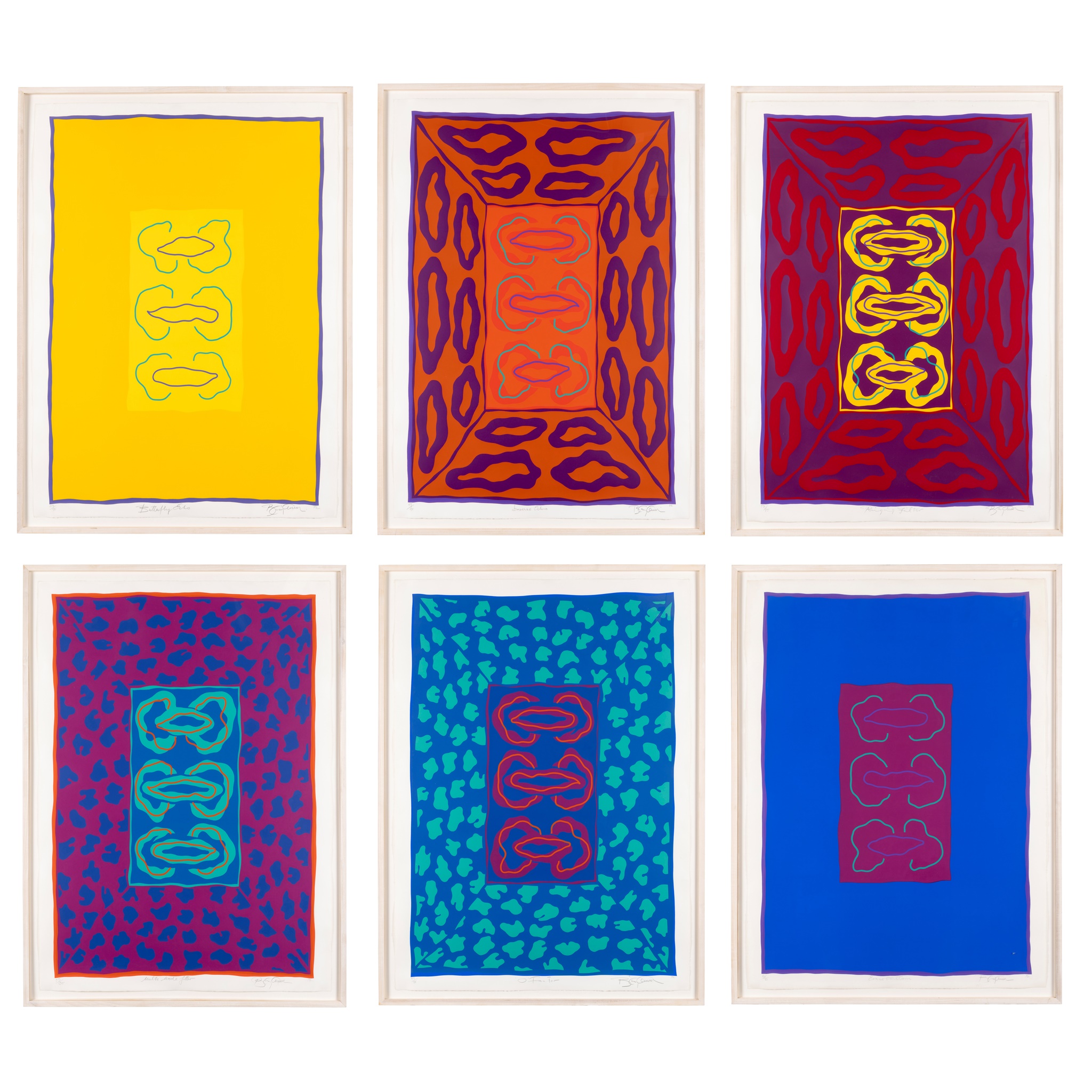Anthony Benjamin (British 1931-2002) §
Roxy Bias Suite, 1972
£5,040
Auction: 27 October 2023 from 11:00 BST
Description
complete set of six, comprising Butterfly Echo, Erase Function, Inverse Echo, Multi-Mode Jitter, O Factor and Ringing Filter, each signed, titled, dated and numbered 59/95 in pencil (in the margin), silkscreen on BFK Rives handmade paper, printed by Kevin Harris at Calvert Studio
Dimensions
each sheet 105.5cm x 76.5cm (41 1/2in x 30 1/8in)
Provenance
Provenance
The Estate of the Artist.
Footnote
A Journey from Social Realism to Abstract Expressionism: Works from the Estate of Anthony Benjamin
Few artists successfully span both Modern and Contemporary periods in British art whilst moving between multiple mediums. Anthony Benjamin (1931-2022) was one such polymath working in painting, drawing, printmaking and sculpture in wood, metal and plastic. Benjamin wrote that, for him, ‘an idea is more important to a man than any physical object’, in the catalogue for his 1966 exhibition at the Institute of Contemporary Arts in London.
Chris Stevens, then curator of modern British art and Head of Displays at Tate Britain, described Benjamin as ‘an anarchist who ignored trends and forged his own path’. A bit of a loner and a bit of a thinker, Benjamin was quick to accept opportunities to work in new spaces, learning from the best. It was in Paris in the late 50’s, at Atelier 17 with William Stanley Hayter, that he experimented with new forms of painting, moving away from the landscape abstraction of St Ives. However, a constant in his practice was a precision of line, an incomparable quality of execution and an intense understanding of colour and form. Benjamin thought as he made and his thinking was always one-step ahead of the rest.
It was during the 1970s, in collaboration with leading printer Kevin Harris at Calvert Studio, that Benjamin produced his seminal series of screenprints Roxy Bias Suite. Inspired by his student Brian Eno, Benjamin was fascinated by the new electronic music Eno was composing. Each of the six images in the series was named after computer music terms such as Inverse Echo and Multi-Mode Jitter. The screenprints use outrageously clashing bold colours, almost as if electrified and challenge the viewer with uncompromising energy. Sumptuous pieces, they were both of the time but also way-ahead of their time.
No matter what Benjamin turned his hand to the results were always perfectly executed. In the 1990s he returned to drawing with a solo show at Gimpel Fils in London. Large scale works, they are more paintings in graphite than drawings. Involving a complex range of techniques of masking and erasure, of painting with graphite dust as well as drawing with broad pencils, these works incorporate texture and atmosphere, geometric forms, polar whites and intense blacks. They are some of the most powerfully evocative images that Benjamin produced.
Throughout his career Benjamin held teaching posts at a variety of colleges of art and universities including time spent in the USA and Canada as Professor of Art at the University of Calgary and Hayward State College in California. His work is now held in a great number of international public collections including the Arts Council of Great Britain, the Tate, UK and the Museum of Modern Art in New York.

